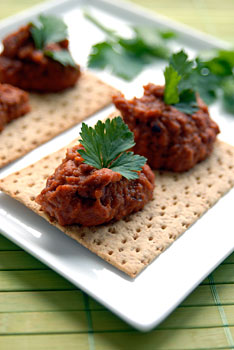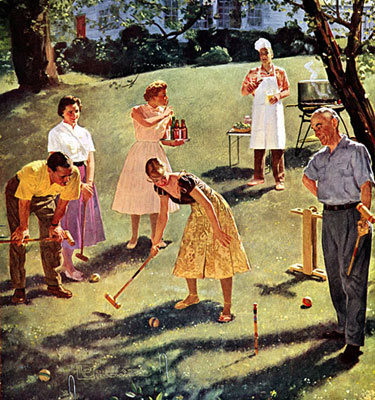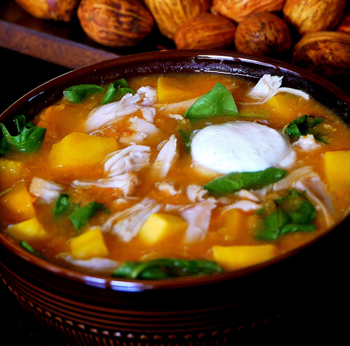Elegant Entertaining
by Holly Palance
 All I want for Christmas is my caviar pie. Which is a jolly good thing, since it's the only dish I take joy in creating.
All I want for Christmas is my caviar pie. Which is a jolly good thing, since it's the only dish I take joy in creating.
Born without the cooking gene, my talent was always for producing and managing parties, until Brent Power, my best friend from grade school served up a delectable dip Christmas Eve 1982 at my wedding shower and I was hooked. I actually broke down, copied the recipe (my first ASK ever) and have been serving it and bringing it as my pot luck contribution ever since to ooh's and ahh's.
 Ina Garten’s Roasted Eggplant Spread
Ina Garten’s Roasted Eggplant Spread
Leek & Saffron Broiled Oysters

 It is a mystery to us why Egg Nog is so popular (even though we are big fans of dairy over here), but this recipe by Pure Bar Founder, Veronica Bosgraaf’s has us intrigued. It can be found in her cookbook,
It is a mystery to us why Egg Nog is so popular (even though we are big fans of dairy over here), but this recipe by Pure Bar Founder, Veronica Bosgraaf’s has us intrigued. It can be found in her cookbook,  It’s the holiday season and along with sipping cocoa by the fire, it’s the perfect time to cozy up with a good book. We thought we’d take the time to share some classic titles for your twelve days of Christmas. Maybe we’ll introduce you to a new title or two.
It’s the holiday season and along with sipping cocoa by the fire, it’s the perfect time to cozy up with a good book. We thought we’d take the time to share some classic titles for your twelve days of Christmas. Maybe we’ll introduce you to a new title or two.


 It’s not easy being Jewish during the Christmas season, especially if
you’re a kid. Chanukah is great, don’t get me wrong. Presents for eight
nights in a row. Lighting the candles and watching them flicker in the
menorah until they gradually fade away. And I’m a big fan of the latke.
But compared to Christmas? Really?
It’s not easy being Jewish during the Christmas season, especially if
you’re a kid. Chanukah is great, don’t get me wrong. Presents for eight
nights in a row. Lighting the candles and watching them flicker in the
menorah until they gradually fade away. And I’m a big fan of the latke.
But compared to Christmas? Really?
